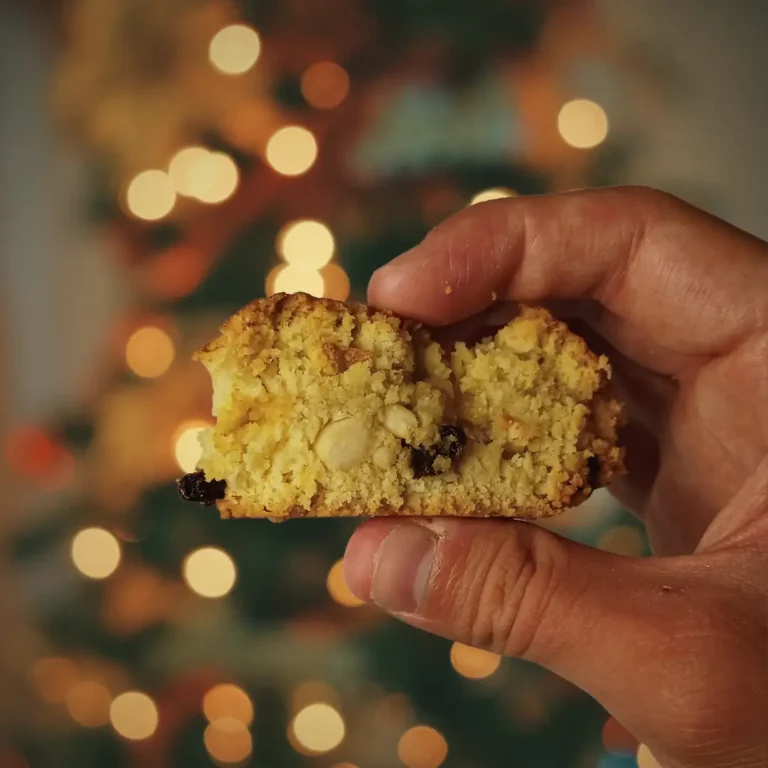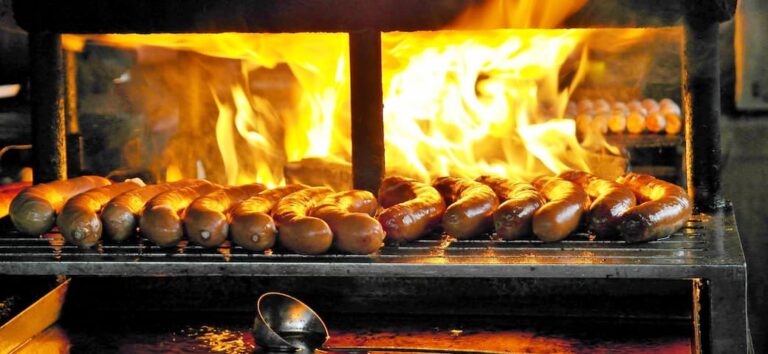Want to try something new this Christmas? If yes, I’ve got a fun thing for you. Here’s a 120-year-old Italian almond Christmas cookies, straight from the most fascinating cookbook I’ve ever read. These delicious cookies burst with sweet, authentic flavors. They’re a journey back in time echoing the wholesomeness and warmth of homemade traditions.
I like to find things to enjoy every time of the year. As Christmas time approaches, this often translates into baking lots of cookies and learning how to make new dishes to bring to my family gatherings.
I love the cozy, warm vibes of the Holidays, and as I was looking for a new recipe that echoed them, I got an idea: why not look into Artusi’s cookbook?
What Makes This Recipe Special
These almond Christmas cookies are not just a delightful holiday treat—they are a direct connection to Italy’s rich culinary history. Their timeless flavor and unique texture set them apart from modern cookie recipes.
The Charm of Artusi’s Cookbook
The book I’m talking about is La Scienza in Cucina e l’Arte di Mangiar Bene, first published by Pellegrino Artusi in 1891. It includes over 790 folk recipes from every region of Italy, collected by the author during his countless travels.
Before Artusi, most cookbooks focused on French cuisine and technical language that excluded everyday readers. Artusi changed this by offering practical, approachable recipes written in a friendly tone.
This book is more than a collection of recipes—it’s a snapshot of 19th-century Italian culture, and the traditional Italian Christmas cookies recipe captures the festive spirit of that era perfectly.
Perfect for Festive Gatherings
These almond Italian cookies combine festive flavors like candied fruit, almonds, and anise, making them a warm addition to any holiday table. While rooted in history, the recipe is surprisingly easy to recreate in today’s kitchens, preserving the charm of old-fashioned almond cookies for modern celebrations.
Artusi’s Almond Christmas Cookies Recipe and How to Make It
This is Artusi’s original recipe, as translated in the English edition of La Scienza in Cucina.
“400 grams of flour, 200 grams of sugar, 80 grams of butter, 40 grams of almonds, 30 grams of sultanas, 20 grams of pine nuts, 20 grams of candied citron or candied pumpkin, a pinch of aniseeds, 2 tablespoons of reduced wine, a scant teaspoon of baking soda, 1 whole egg and 3 egg yolks.
These cookies are more refined than the ones in the preceding recipe; and I think they leave nothing to be desired. Shell the almonds and pine nuts, remove the skins and leave whole. Cut the candied fruit into tiny pieces. Make a hole in the mound of flour and place the eggs, sugar, butter, wine, and baking soda in it. Blend the mixture without working it too much; then open it up and spread it out so you can add the other ingredients. Form a rather compact narrow cylinder, about 1 meter long (3 feet), which you will divide into four or five parts so that it fits in the baking pan. Gild with egg yolk and bake. When it is cooked, slice into cookies a little more than 1 centimeter (about half an inch) thick, and toast lightly on each side.“
As you can see, Artusi’s style is very simple. However, our friend tends to take some things for granted. For example, when he lists the ingredients, he does not mention that you should also have one or two more egg yolks on hand to brown the dough before baking it. The part about how to bake the cookies would be worth a little more discussion as well.
On top of that, he uses some archaic or overly general terms, which can lead to uncertainties about the translation. For example, based on his other recipes, I believe he used spirito di vino (which means ethanol and was improperly translated as “reduced wine”) to mean a generic liquor.
For these reasons, I tested the recipe a couple of times and wrote a more detailed version. Here it is!
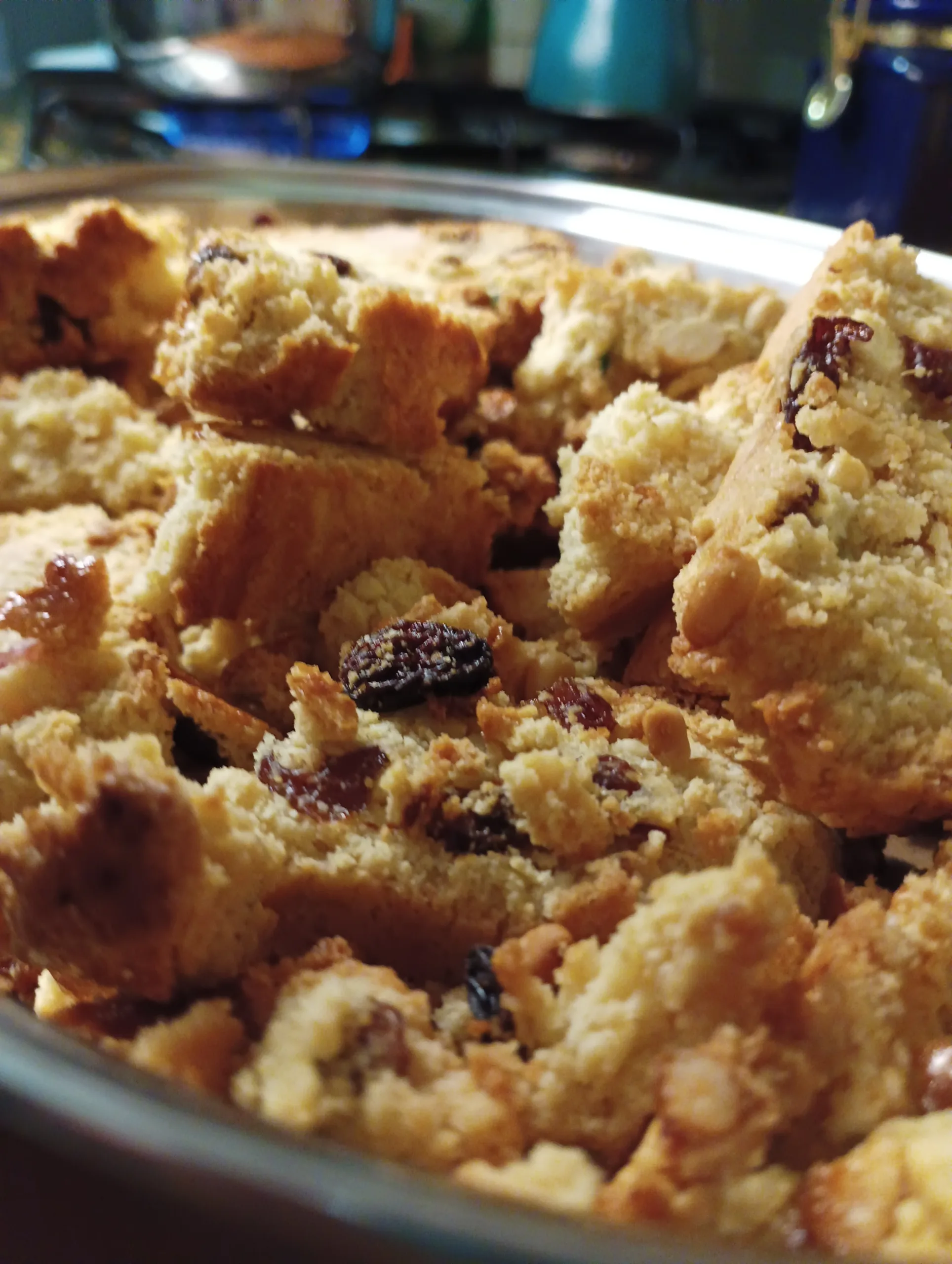
Ingredients for Almond Christmas Cookies
- Flour & Baking Soda: Use weak flour, preferably ‘00’. Self-rising flour is an option; skip the baking soda.
- Sugar: Either white or powdered sugar works. Brown sugar adds an unnecessary flavor.
- Unsalted Butter: Should be at room temperature for easy blending.
- Peeled Almonds & Pine Nuts: Essential for both flavor and texture. Avoid almond extract, almond meal, or ground almonds.
- Rhum or Anise-Flavored Liquor: Adds a festive note. Anise extract or mulled wine are acceptable substitutes.
- Sultanas or Raisins: Choose whichever is available; both add sweetness and texture.
- Candied Citron/Pumpkin & Anise Seeds: These ingredients give the cookies a sweet, festive taste.
- Large Eggs: One whole egg and three yolks for the dough, with one or two extra yolks for gilding.
Optional Additions
For extra flavor, consider:
- Orange zest
- Vanilla extract
- Lemon zest
- A dash of cinnamon or nutmeg for a spiced twist
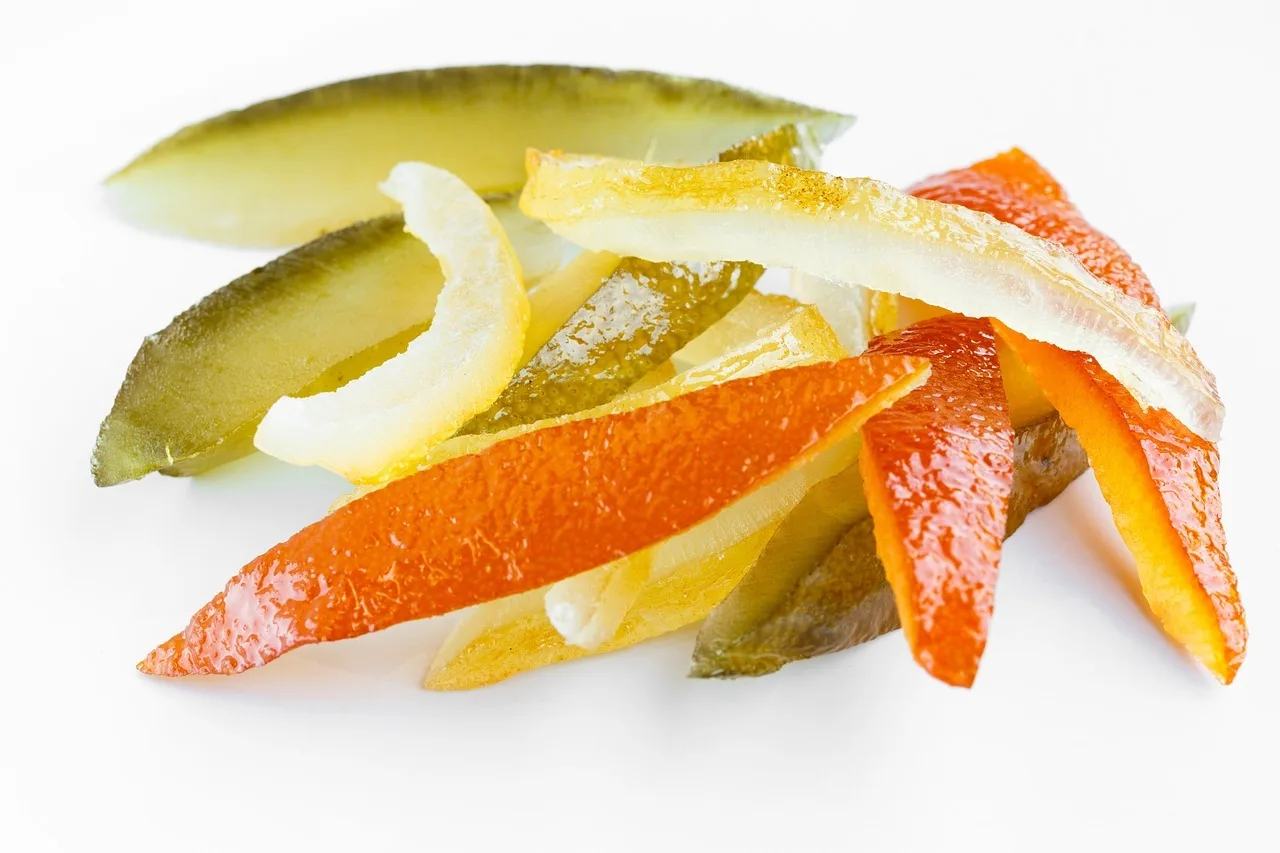
How to Make Almond Christmas Cookies
Step 1: Prepare the Mix-Ins
Combine peeled almonds, pine nuts, candied fruit, anise seeds, and sultanas in a small bowl. Set aside.
Step 2: Mix the Dough
Sift flour onto a clean work surface, forming a well in the center. Add eggs, sugar, butter, liquor, and baking soda. Blend the mixture with a fork, then knead with floured hands until combined.
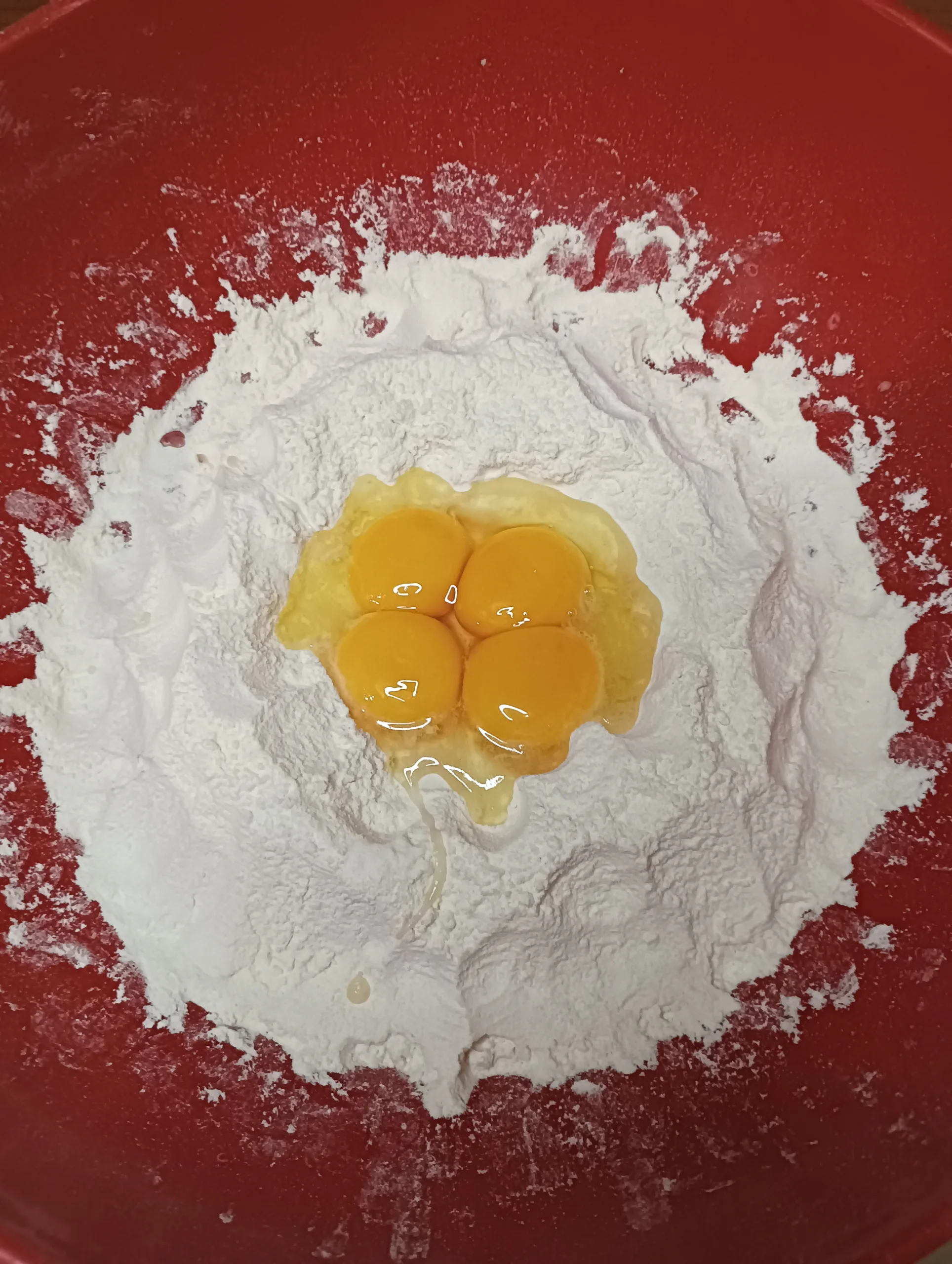
Step 3: Incorporate the Ingredients
Spread out the dough to incorporate the mix-ins. Knead thoroughly to ensure even distribution.
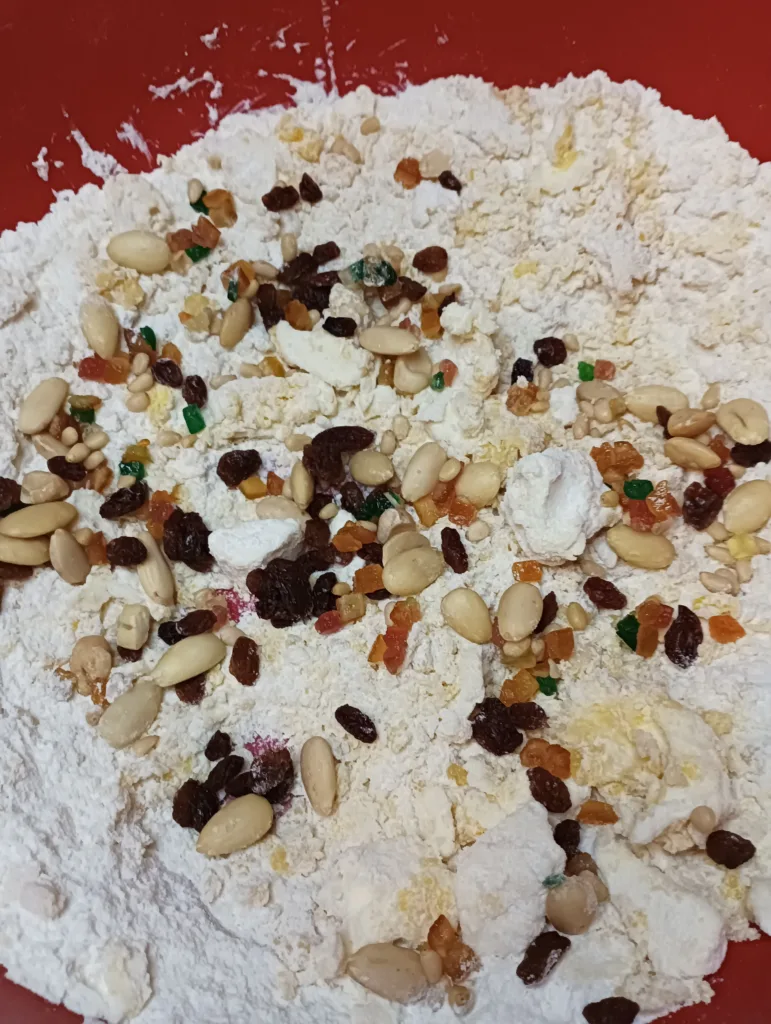
Step 4: Shape and Bake
Roll the dough into 2-3 compact cylinders to fit your baking tray. Arrange on parchment-lined trays, brush with egg yolk, and bake at 356°F for 45 minutes.
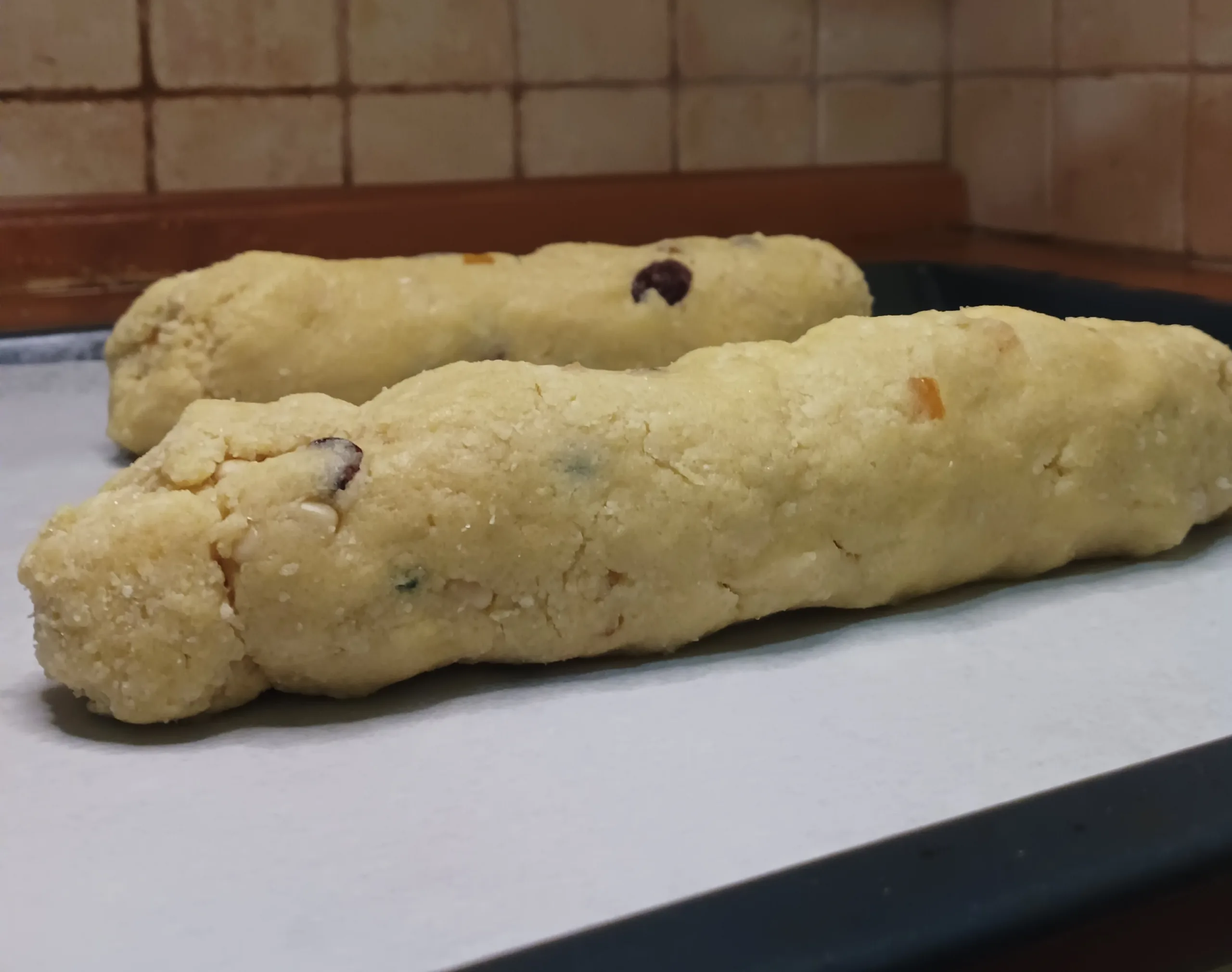
Step 5: Slice and Toast
Pro Tips for Perfect Almond Christmas Cookies
- Use Room-Temperature Butter: Ensures the dough blends smoothly.
- Steam for a Softer Crust: Place an iron pot with water in the oven during baking to prevent the crust from hardening too quickly.
- Don’t Overwork the Dough: Knead just enough to combine ingredients; overworking can make the cookies dense.
- Sharp Knife for Clean Slices: Use a smooth-edged knife to slice the loaves neatly without crumbling.
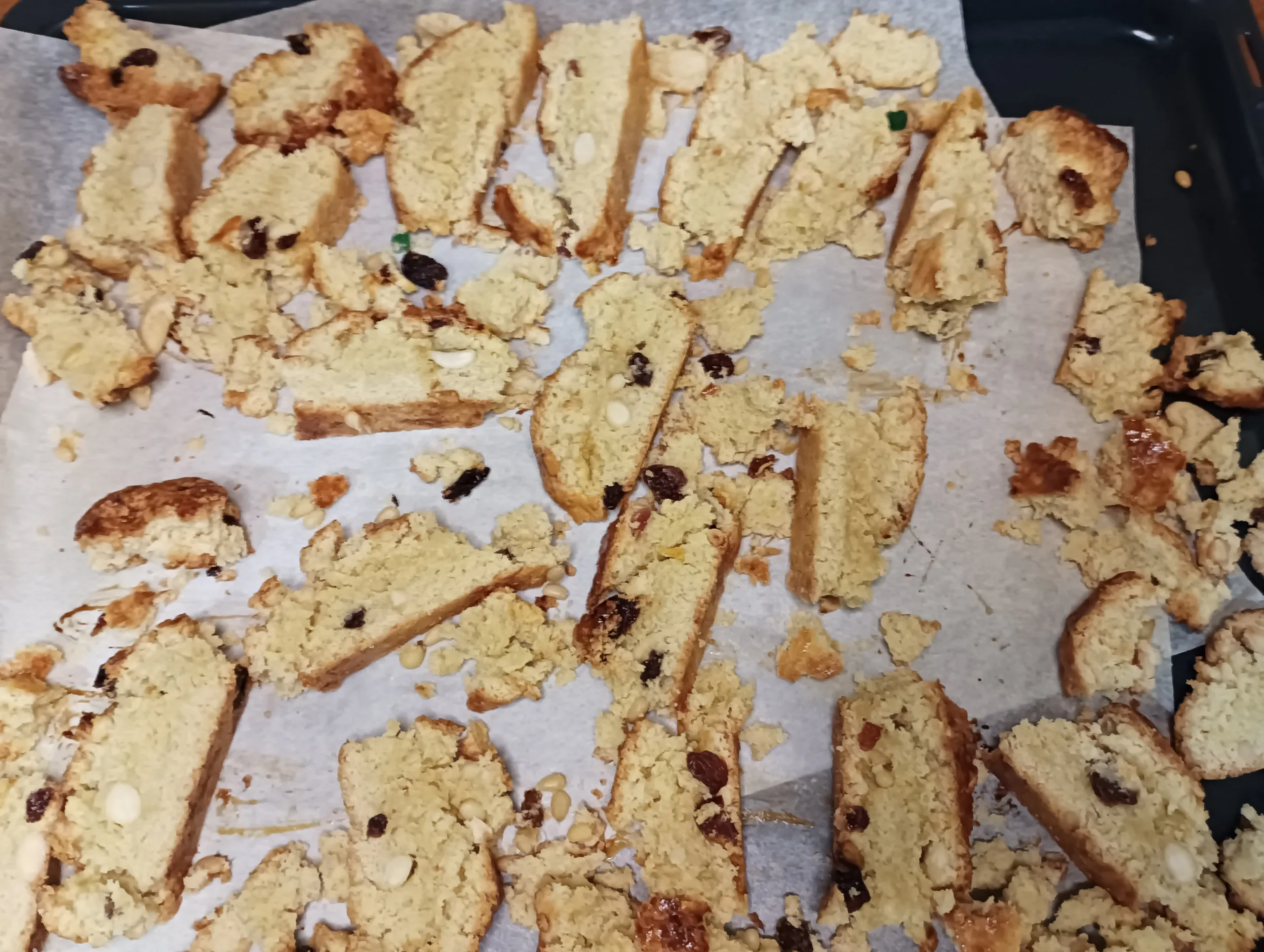
FAQs About Almond Christmas Cookies
How Should I Store These Cookies?
Store them in an airtight container at room temperature for up to one week. For longer storage, freeze in a sealed bag for up to three months.
Can I Replace the Liquor?
Yes, you can substitute it with anise extract, orange juice, or even mulled wine for a non-alcoholic version.
What’s the Best Time to Bake These?
These cookies are perfect for holiday prep. Bake them a few days in advance to save time—they taste even better after resting.
Making the Most of Your Almond Christmas Cookies Experience
From expert tips to creative serving ideas, let’s make these cookies truly unforgettable!
Creative Variations for Almond Christmas Cookies
Give these classic cookies a personal twist by adding chocolate chips, dipping them in melted dark or white chocolate, or spicing them up with cinnamon or cardamom. These small changes can elevate the flavor and make them perfect for any special occasion.
Pairing Suggestions for Almond Christmas Cookies
Pair these almond cookies Italian-style with a warm cup of mulled wine, an espresso, or a creamy Italian hot chocolate. These pairings bring out the rich, festive flavors of the cookies.
Tips for Storing and Gifting Almond Christmas Cookies
Store in airtight containers to keep the almond Christmas cookies fresh for up to a week. For gifting, pack them in decorative tins or festive bags to create thoughtful, edible holiday presents.
The Cultural Significance of Almond Cookies in Italian Holidays
In Italy, almond cookies are a cherished Christmas tradition, symbolizing warmth and togetherness. Each region offers its own variation, from candied fruit-laden Sicilian cookies to more minimalistic Tuscan versions. These cookies represent the heart of Italian holiday festivities.
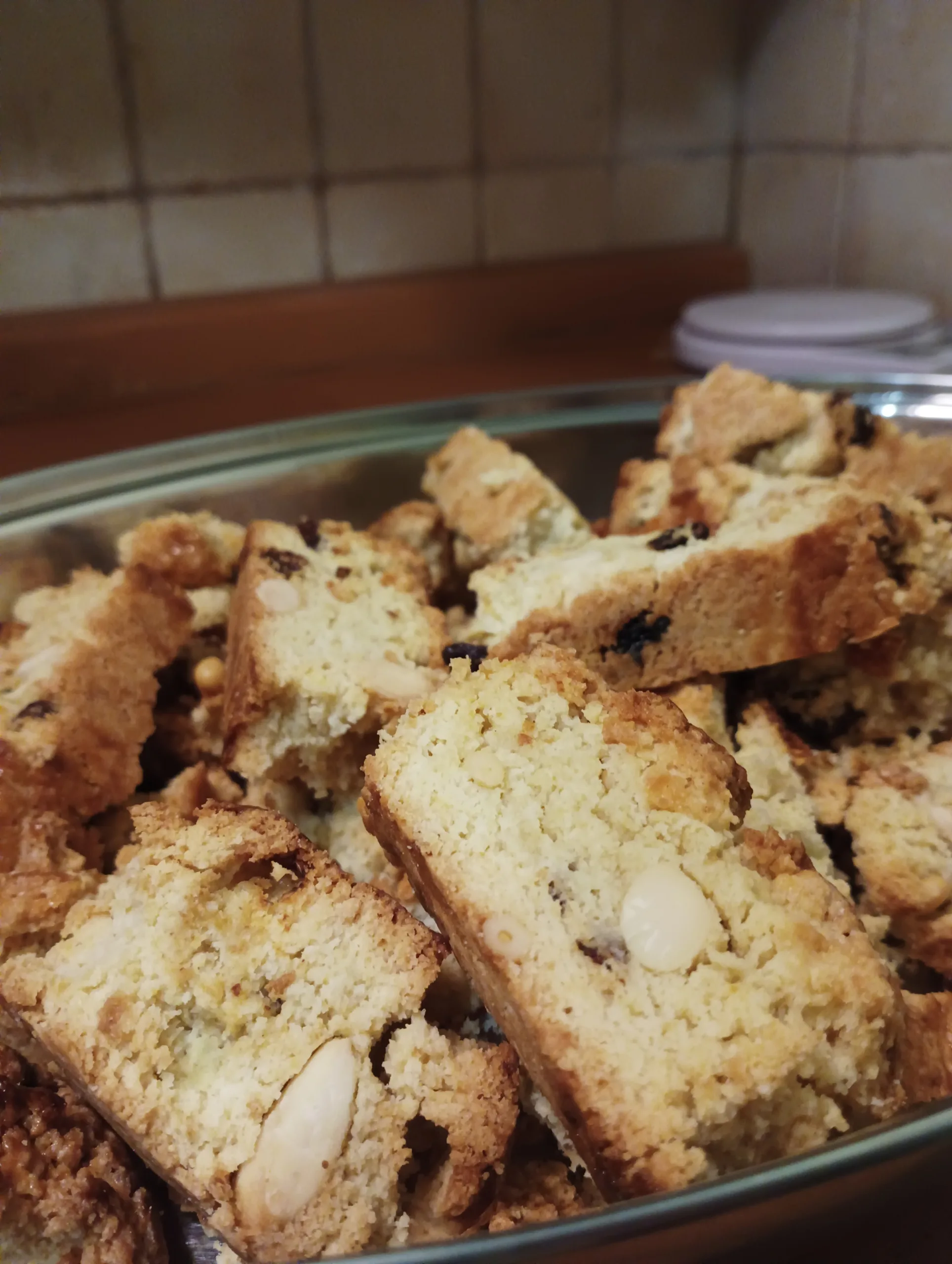
Why These Almond Christmas Cookies Deserve a Spot on Your Table
These cookies are more than a dessert; they’re a piece of Italian history. Whether you’re a seasoned baker or a novice, this recipe is approachable, festive, and absolutely delicious. Serve them with mulled wine or coffee, and let your holiday celebrations be filled with warmth and joy.
Ready to bring this historic recipe to your holiday table? Try making these almond Christmas cookies and experience the charm of traditional Italian baking. Don’t forget to check out more holiday recipes on our site and share your creations in the comments!
PrintItalian Christmas Almond Cookies
5 Stars 4 Stars 3 Stars 2 Stars 1 Star
No reviews
- Author: Mortadella Head
- Total Time: 1 hour 20 minutes
- Yield: 30 Cookies 1x
Ingredients
400 grams of flour
200 grams of sugar
80 grams of butter
40 grams of whole almonds (peeled)
30 grams of sultanas or raisins
20 grams of pine nuts
20 grams of candied citron or candied pumpkin (thinly diced)
A pinch of aniseeds
2 tablespoons of rhum or anisette
A scant teaspoon of baking soda
1 whole egg and 3 egg yolks (for the dough) + 2 extra egg yolks (for gilding)
Notes:
You can avoid wasting the resulting egg whites by mixing them with fine salt and dried herbs and cooking them in a saucepan like a frittata.
Disclaimer: The nutritional information provided for this recipe is only an estimate generated with VeryWellFit’s online calculator. The accuracy of the facts listed is not and cannot be guaranteed.
Instructions
- Mix almonds, pine nuts, candied fruit, sultanas, and anise seeds in a small bowl. Set aside.
- Sift flour onto a clean surface or large bowl. Make a well in the center. Add eggs, sugar, butter, rhum/anisette, and baking soda.
- Blend the ingredients with a fork, then knead with hands.
- Preheat oven to 356°F.
- Spread out the dough and knead in the fruit and nut mix.
- Form into narrow cylinders and cut into loaves. Place on a greased, parchment-lined baking sheet.
- Gild with the extra egg yolks using a kitchen brush.
- Bake for 45 minutes. Pro Tip: Place a pot with water at the bottom of the oven to create steam.
- After cooling, slice loaves into 1/3-inch pieces. Toast in the oven for 12-15 minutes, flipping halfway.
- Cool and serve with mulled wine or store in an airtight container for up to a week.
- Prep Time: 20 minutes
- Cook Time: 60 minutes
- Category: Cookies
- Cuisine: Italian
Nutrition
- Serving Size: 1 Cookie
- Calories: 123
- Sugar: 7.6g
- Sodium: 271mg
- Fat: 4.5g
- Saturated Fat: 1.8g
- Carbohydrates: 18.7g
- Fiber: 0.6g
- Protein: 2.5g
- Cholesterol: 46mg

